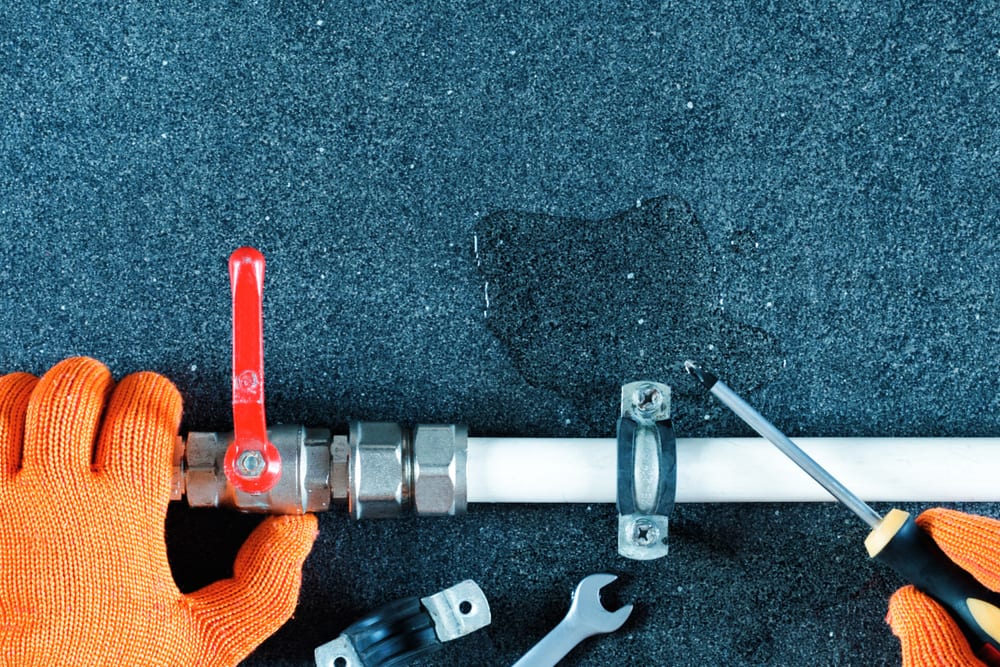Guide To Water Leak Detection In The House
Guide To Water Leak Detection In The House
Blog Article
Nearly everybody seems to have their unique opinion involving Top leak detection hacks.

Early discovery of dripping water lines can reduce a potential calamity. Besides saving you money, it will reduce the irritation and also aggravation. The minute you find a leakage, calling your plumber for repair work is the best option. Nevertheless, some tiny water leakages might not be visible. Here are some hacks that assist if you can not detect it with your nude eyes.
1. Take A Look At the Water Meter
Examining it is a surefire means that assists you discover leakages. If it moves, that shows a fast-moving leakage. This implies you might have a slow leak that can also be below ground.
2. Check Water Consumption
If you spot unexpected changes, in spite of your usage being the exact same, it suggests that you have leaks in your plumbing system. An abrupt spike in your bill shows a fast-moving leakage.
A steady rise every month, also with the same routines, shows you have a slow-moving leak that's also slowly intensifying. Call a plumber to extensively check your building, especially if you feel a cozy location on your flooring with piping below.
3. Do a Food Coloring Examination
When it comes to water intake, 30% comes from commodes. If the color in some way infiltrates your dish during that time without flushing, there's a leakage in between the container and bowl.
4. Asses Exterior Lines
Don't forget to inspect your outside water lines too. Should water leak out of the connection, you have a loosened rubber gasket. One tiny leakage can lose bunches of water and increase your water expense.
5. Check and Evaluate the Situation
Homeowners need to make it a habit to examine under the sink counters and even inside cabinets for any type of bad odor or mold growth. These 2 warnings show a leak so punctual focus is needed. Doing routine assessments, even bi-annually, can conserve you from a significant trouble.
More importantly, if you know your house is currently old, maintain a watchful eye on your heating systems, pipes, pipelines and so on. Check for discolorations and also damaging as the majority of home appliances and pipelines have a life span. They will certainly additionally naturally weaken because of deterioration. If you believe dripping water lines in your plumbing system, don't wait on it to rise. Call a professional plumber right now so you don't wind up with an awful mess in your home.
Early discovery of leaking water lines can minimize a prospective calamity. Some small water leakages may not be noticeable. Checking it is a guaranteed means that helps you uncover leaks. One small leakage can waste bunches of water as well as increase your water expense.
If you presume leaking water lines in your plumbing system, do not wait for it to escalate.
WARNING SIGNS OF WATER LEAKAGE BEHIND THE WALL
PERSISTENT MUSTY ODORS
As water slowly drips from a leaky pipe inside the wall, flooring and sheetrock stay damp and develop an odor similar to wet cardboard. It generates a musty smell that can help you find hidden leaks.
MOLD IN UNUSUAL AREAS
Mold usually grows in wet areas like kitchens, baths and laundry rooms. If you spot the stuff on walls or baseboards in other rooms of the house, it’s a good indicator of undetected water leaks.
STAINS THAT GROW
When mold thrives around a leaky pipe, it sometimes takes hold on the inside surface of the affected wall. A growing stain on otherwise clean sheetrock is often your sign of a hidden plumbing problem.
PEELING OR BUBBLING WALLPAPER / PAINT
This clue is easy to miss in rooms that don’t get much use. When you see wallpaper separating along seams or paint bubbling or flaking off the wall, blame sheetrock that stays wet because of an undetected leak.
BUCKLED CEILINGS AND STAINED FLOORS
If ceilings or floors in bathrooms, kitchens or laundry areas develop structural problems, don’t rule out constant damp inside the walls. Wet sheetrock can affect adjacent framing, flooring and ceilings.
https://www.servicemasterbyzaba.com/blog/how-to-detect-water-leakage-in-walls/

I recently found that write up about Locating water leaks while doing a lookup on the internet. Are you aware of another individual who is fascinated with Leaking water lines? Why not share it. Bless you for your time. Don't forget to stop by our website back soon.
Report this page